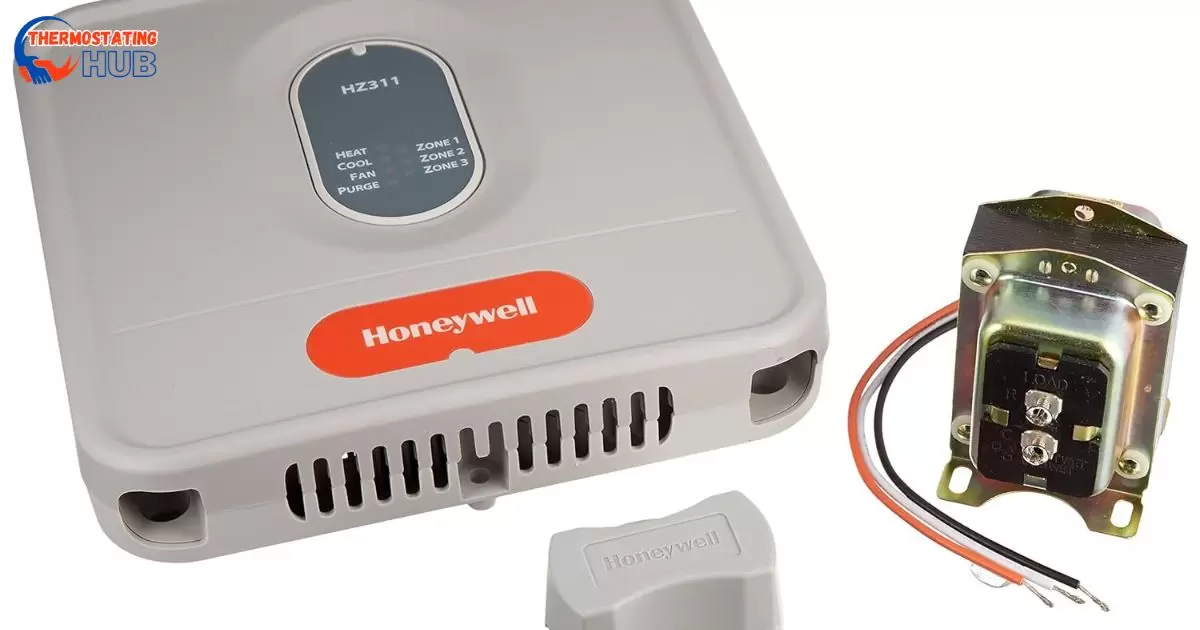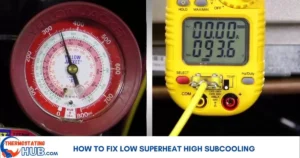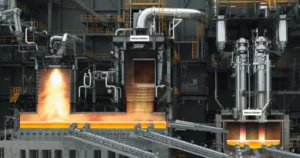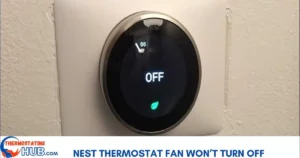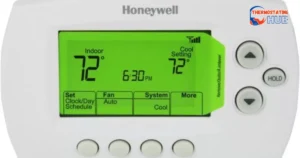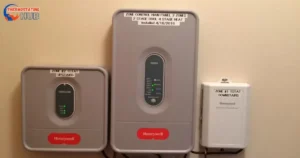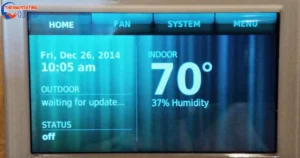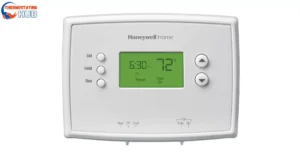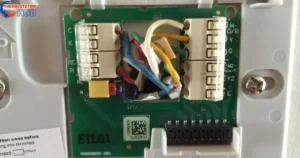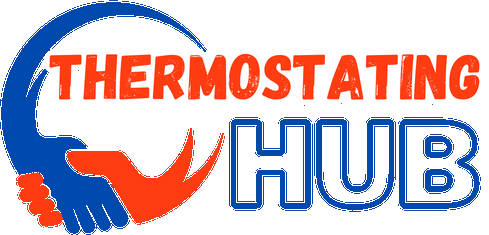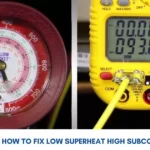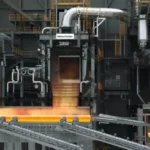Welcome to an effortless solution for Honeywell HZ311 troubleshooting! If you’ve encountered a red light hiccup with your HZ311, worry not we’ve got the answers.
In this guide, we’ll walk you through straightforward steps to solve the red light issue and get your system back in working order. No need to stress; our easy to follow tips will empower you to troubleshoot with confidence, ensuring a hasslefree experience.
Let’s dive in and unravel the simplicity of resolving the Honeywell HZ311 red light mystery.
Common Causes of a Red Light on the Honeywell HZ311
The Honeywell HZ311 zoning control panel helps control the temperature and airflow in various parts of a building. But if you see a red light on the panel, it means there’s a problem that needs fixing. Let’s look at why the red light might be on and what it could mean for your heating and cooling system:
Low Refrigerant Levels How They Affect Your HVAC System
If there’s not enough refrigerant in your Honeywell HZ311 panel, a red light might pop up. Refrigerant is like the superhero that takes heat from inside your home and tosses it outside. But, if there’s not enough of this cool stuff, your system can’t chill the air properly. This can make the compressor get too hot and break. Also, low refrigerant levels can make the evaporator coil freeze, making your system even worse at cooling and using up more energy.
Low refrigerant levels can cause problems for your HVAC system. Refrigerant is what helps your system cool the air. When the levels are too low, your system has to work harder, making it less efficient and costing you more in energy bills. It can also lead to poor cooling performance, and if not addressed, it might damage the compressor, a vital part of your HVAC.
So, keeping an eye on refrigerant levels is important for the efficiency and longevity of your system. If you notice issues like warm air blowing or strange hissing sounds, it’s a sign that you might have low refrigerant levels, and it’s time to call a professional to check and fix it.
Closed Dampers: What They Are and How They Impact Temperature Regulation
Closed dampers play a crucial role in controlling temperatures in your home. Think of dampers as adjustable doors in your heating and cooling system. When these dampers are closed, they limit the airflow to specific areas, affecting the temperature in those spaces. By understanding how to use dampers, you can customize the comfort level in different rooms. If you close dampers in unused rooms, more warm or cool air goes to the rooms you’re using, making your home more efficient. So, knowing about closed dampers helps you manage your home’s temperature better and saves energy.
Defective Blower Motor: The Effects on Air Circulation
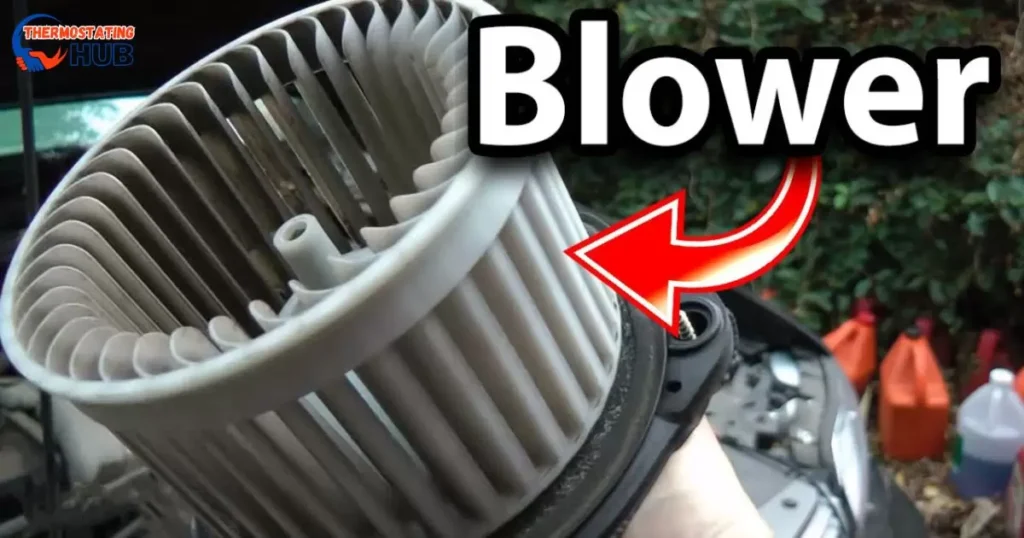
The blower motor helps move air around in the heating and cooling system. If it’s not working right, the system won’t spread air like it should. This can make it tough to control the temperature and feel comfortable.
Also, a broken blower motor can make the system use more energy than it needs to and might even damage the equipment.
Condenser Unit Not Working: What It Means for Your HVAC System
When your condenser unit isn’t working, it can cause problems for your HVAC system. The condenser plays a crucial role in cooling your home, so if it’s not functioning properly, your system may not cool as it should. This can lead to discomfort and higher energy bills.
Common reasons for a nonworking condenser include electrical issues, a malfunctioning motor, or problems with the refrigerant. It’s essential to address these issues promptly by seeking professional help.
Regular maintenance is key to preventing condenser problems and ensuring your HVAC system keeps you comfortable year round.
Read also: How To Reset RiteTemp Thermostat Quickly And Easily
Steps for Troubleshooting a Red Light on the Honeywell HZ311
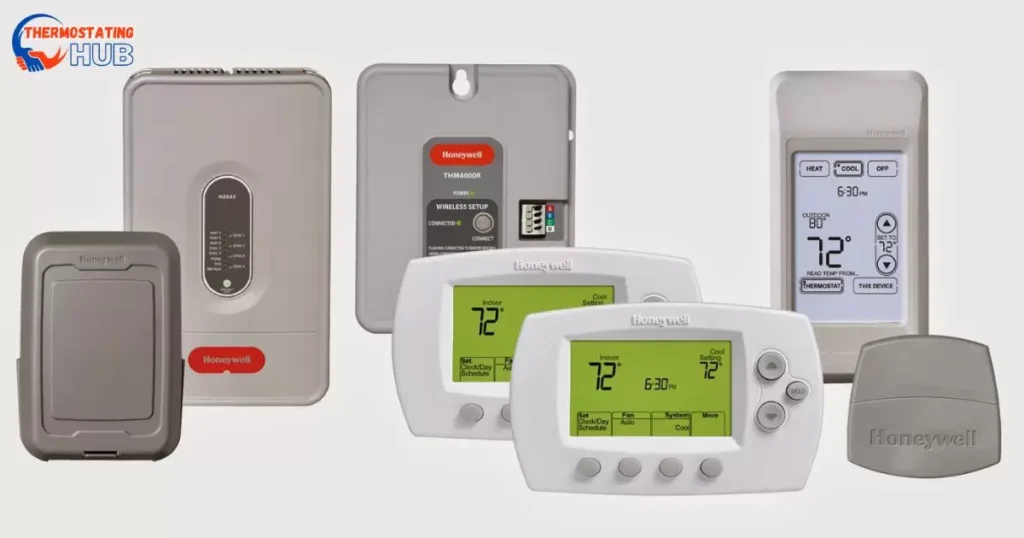
If your Honeywell HZ311 thermostat has a red light, it might mean there’s a problem with your heating or cooling. Here’s what you can do to figure out what’s going on:
1. Confirm the power: Double Check if the thermostat has power. If not, inspect the circuit breaker and ensure all wires are properly connected.
2. Adjust the temperature: Ensure the thermostat is set to the right temperature. If it’s too high or too low, it might trigger the red light. Set it to your preferred temperature.
3. Examine the filter: If the filter is dirty or clogged, it could trigger the red light. Clean or replace the filter if needed.
4. Inspect the wiring: Make sure all wires are securely connected, and there are no loose or damaged wires.
5. Check the sensors: The sensors in your Honeywell HZ311 thermostat may need cleaning or calibration. Refer to the user manual for guidance on how to do this.
Identify the Issue: First, figure out why the red light is on. Check for power issues, low batteries, or any visible problems.
Refer to the Manual: Consult the user manual for the Honeywell HZ311. It often contains specific troubleshooting steps for different scenarios.
Reset the System: Try a system reset by turning off the power, waiting for a few minutes, and then turning it back on. This can sometimes resolve temporary glitches.
Contact Support: If the red light persists, reaching out to Honeywell’s customer support can provide additional guidance and assistance.
By following these simple steps, you can efficiently troubleshoot and resolve the red light issue on your Honeywell HZ311, ensuring optimal performance of your heating and cooling system.
When to Call a Professional HVAC Technician
If your heating or cooling system has a problem, sometimes you can fix it yourself. But when things get tricky or the system isn’t working right, it’s best to call in a professional HVAC technician. Here’s why it’s a good idea to get expert help for complicated issues, how to tell when you need a pro, and why regular maintenance is beneficial.
Why You Should Get Professional Help for Complicated Problems
If you’re dealing with a complicated heating or cooling problem, it’s usually better to ask a professional for help. They have the knowledge and tools to fix things correctly.
What Does the Red Light on My Honeywell HZ311 Mean?
If you see a red light on your Honeywell HZ311, it’s a sign that something is wrong with the system. To figure out the issue, check the user manual or, even better, reach out to a professional HVAC person. They can identify the problem and get things working again.
| Situation | When to Call a Professional HVAC Technician |
| Strange or loud noises from the system | Call if you hear unusual sounds, as they may indicate issues. |
| Uneven heating or cooling in your home | If some rooms are too hot or too cold, it’s time to seek professional help. |
| System continuously cycling on/off | Frequent cycling could signal a problem that needs expert attention. |
| Unusual smells or odors from vents | Strange smells may indicate a problem with the system that requires inspection. |
| Sudden increase in energy bills | A significant spike in energy costs may suggest an efficiency issue that needs addressing. |
| System not providing adequate comfort | If your HVAC system isn’t keeping your home comfortable, it’s time to consult a professional. |
Signs That Indicate the Need for Professional Assistance
Here are some clues that show you might need help from a professional for your heating or cooling system:
Weird sounds: Odd noises like banging, rattling, or grinding might mean something’s wrong with a part or system.
Not enough air: If air doesn’t flow well or is uneven, it could be a problem with the pipes or the fan.
Expensive energy bills: If your bills are much higher than normal, it might mean your heating and cooling system isn’t working as well as it should.
Lots of problems: If your system keeps breaking down or needing fixes often, it could be a sign of bigger problems that need a professional to look at.
- Odd Sounds: If your appliances or systems are making strange noises, it’s a sign that a professional should take a look.
- Unusual Smells: Strange or unpleasant odors can signal issues with electrical systems, appliances, or HVAC units, requiring expert attention.
- Flickering Lights: Lights that flicker or dim might suggest electrical problems, and it’s best to consult a professional to avoid safety risks.
- Water Leaks: Any unexpected water leaks, whether from pipes or appliances, need immediate attention from a professional plumber or technician.
- Reduced Performance: If your appliances or systems aren’t working as efficiently as before, it’s time to seek professional assistance to prevent further damage.
Recognizing these signs early and calling in a professional can save you time, money, and ensure the safety of your home.
The Benefits of Regular Maintenance and TuneUps
Getting your heating and cooling system checked regularly is a smart move. It helps prevent problems and makes your equipment last longer. HVAC experts can do simple tasks like cleaning coils and changing filters to keep your system running well. They can also catch potential issues early, saving you money on repairs and energy bills later on.
To sum it up, it’s important to get professional help for big problems with your HVAC system. Pay attention to signs that show you need help and get regular checkups. Taking these steps keeps your home comfy and your system working well all year.
Regular maintenance and tune-ups for your appliances and systems bring many advantages. First off, they help prevent problems before they happen, saving you from unexpected breakdowns. When professionals check and clean things like filters and coils, your equipment works better, and that means lower energy bills. It’s like giving your things a health check to make sure they stay in good shape. Plus, fixing small issues early can prevent bigger, more expensive problems later. So, investing a bit of time and effort in regular maintenance pays off in the long run, making sure everything runs smoothly and efficiently.
| Pros | Cons |
| Pros: | Cons: |
| Easy to follow troubleshooting steps. | May require some basic technical understanding. |
| DIY solutions save time and money. | Limited if the issue is complex or persistent. |
| Swift resolution of common problems. | Professional assistance may be needed in some cases. |
| Prevents potential system downtime. | Some issues may require specialized tools. |
| Enhances user understanding of the system. | Limited effectiveness if the problem is hardware-related. |
Future Scope
Looking ahead, the future scope for resolving the Honeywell HZ311 red light issue appears promising. As technology advances, we can anticipate even more user-friendly solutions and possibly automated troubleshooting options.
The ongoing commitment of companies like Honeywell to enhancing user experience suggests that future troubleshooting will likely become more efficient and accessible.
Embracing innovation, the future holds exciting possibilities for quickly and easily addressing the red light concern on the Honeywell HZ311, ensuring continued reliability and convenience for users.
Answers To Key Questions
Does HZ311 have a fuse?
Yes, the HZ311 typically has a fuse. It’s essential to check and replace it if needed for proper functioning.
What does Honeywell HZ311 do?
The Honeywell HZ311 is a zoning control panel that helps regulate heating and cooling in different areas of your home. It allows for personalized temperature control and energy efficiency.
Why is the red light on my Honeywell HZ311 on?
The red light may indicate an issue, but we’ve got solutions to help you troubleshoot and solve it.
How do I fix the red light on my Honeywell HZ311?
Follow our easy steps to resolve the red light issue on your Honeywell HZ311 and get your system back on track.
What does a red light on Honeywell HZ311 mean?
Find out the possible reasons behind the red light on your Honeywell HZ311 and learn how to solve them for smooth operation.
Is there a quick way to solve the Honeywell HZ311 red light problem?
Yes, discover simple troubleshooting tips to quickly address and solve the red light concern on your Honeywell HZ311.
Can I do the Honeywell HZ311 red light troubleshooting myself?
Our guide provides user-friendly steps for DIY troubleshooting of the red light on your Honeywell HZ311.
Conclusion
Tackling the Honeywell HZ311 red light issue is a breeze with our simple solutions. By understanding the possible reasons behind the red light and following our easy troubleshooting steps, you can swiftly resolve the problem. Whether it’s a minor glitch or a quick fix, our guide empowers you to take control and get your system back on track.
Remember, troubleshooting the red light on your Honeywell HZ311 is manageable, and you don’t need to be an expert. So, follow our straightforward tips, enjoy a hassle free experience, and keep your home’s heating and cooling running smoothly.

I’m Dariel Campbell, the HVAC maestro at thermostatinghub.com. I’m not just about fixing air conditioners; I’m your cooling confidant. As a problem-solving storyteller, I dive into the world of HVAC with a passion for unraveling dilemmas. Join me on a journey where your comfort is the plot twist we’re all waiting for!
